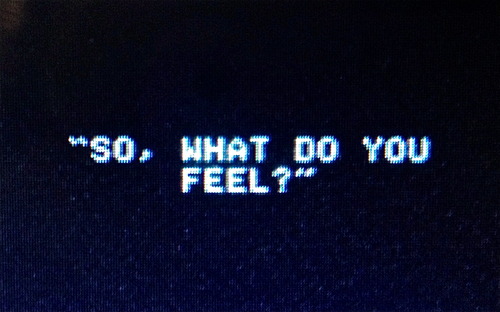
Murat Pak: Designing the Mind of an Online Curator




Each day Archillect peruses her favourite sites for new images that she thinks her 160K followers will appreciate, and the sheer size of her fan base suggests she’s very good at what she does. A quick glance at her Twitter or Facebook feeds shows a keen eye for stark, striking images and a remarkable breadth of interests. Somehow the images all hang together, yet each adds something new and unexpected to the mix. Thematic interests shift over time, and this reflects Archillect’s uncanny ability to stay on top of cultural trends as they’re emerging.
The fact that, as an artificial intelligence, Archillect has neither eyes nor a body to experience what she posts hardly matters. Humans are her sense organs. She learns to trust people who more effectively help her provide what her audience wants, and unlike humans, she does so without bias or irrational preferences. Honesty’s in her DNA. She simply aggregates information on what people respond to, and then, as best she can, curates based on her observations.
It’s beautiful and perhaps daunting in both its simplicity and implications. Her creator Murat Pak was kind enough to chat with me about some of the considerations that have gone into the creation and evolution of Archillect’s existence…
Why have you referred to Archillect as a “she” both on your website and in interviews?
As you know, accounts on social media are called “profiles.” I have a Twitter profile, you have a Facebook profile, someone else has a Tumblr profile, and so on. Why? Because those profiles give information about our personality. The choices we make when we share things are creating how people perceive our character.
From the very beginning, since Archillect was made to find images by following a certain relational structure, I had to trust that Archillect would have a certain character in what she found and shared, which would create an almost personal profile. This is the reason I wanted to present Archillect as a person rather than a random bot. As people perceived Archillect as a character, a personality, they also contributed to the project through the ways they interacted with the project as a result of this perception. This was important to me.
Archillect shared a lot of fashion content, as there is a very high percent female followers (by today it’s around 47% which is very, very high in Twitter terms) and the profile she started to become was more like a female persona rather than a male one.
But more importantly, Archillect is made to inspire. To give inspiration. Inspiration leads creativity and if we look at anything from mother nature (biology) to mythology, all creation and birth comes from a female gender. Those things combined make Archillect a she-personality.




In your description of Archillect, you refer to it as a “synthetic intelligence” rather than an “artificial intelligence.” What distinction do you draw between these two? Where do they overlap?
This is only a point of view rather than a specific difference. Artificial intelligence is generally perceived as a “fake” intelligence where synthetic intelligence is perceived as “real” but only different in the way of its existence. With not only Archillect but all AIs, I prefer to use the term “synthetic intelligence,” as I think it describes much better what can be done with AIs, even in their quite primitive forms today.
In the close future, it will be much more difficult to identify if something is “alive” or “artificial,” and it will be pointless to assume that another kind of intelligence is “fake” only because it’s manmade.
You mention on the website that Archillect is capable of “primitive trend perception.” What do you mean by that? To what extent does Archillect have prediction capabilities?
As Archillect discovers more keywords and people through her data mining process what is actually going on is that she’s trying to identify what would be better to share in terms of reach (i.e., what would get more retweets/likes/shares/etc.). In a way this approximates a perception of a trend. Sometimes for days and days Archillect keeps posting similar things, but again sometimes things may suddenly change because people start disliking them and start liking other things more.
Even though I’ve made tools to analyse colors, I’ve never used them in Archillect for the choice process. In other words, Archillect is technically a “blind” visual judge. The way she makes her picks has no relation with the actual content, has some relation with the keywords, and has a lot of relation with who shared the image (and quite possibly, why). I would like to say “Archillect has no prediction capabilities but rather discovery capabilities that evolve to reach more people in a shorter time.”
How are the keywords and the images she selects from chosen?
I picked the initial keywords, and the initial audience was my followers, which gave Archillect a good direction since I am a designer in roots and most of my followers follow me because of the work I do in the design scene. I trusted them and their eye in aesthetics to shape Archillect, and this was a good decision. Maybe if Archillect was shared on a big platform with a lot more followers than I had when she was made, she would be leaning more to society’s norms rather than leaning to a niche zone in aesthetics.
Virginia Tech professor Dhruv Batra once quipped that when AI fails, it fails “spectacularly disgracefully,” and this was certainly the case with Microsoft’s infamous Tay chatbot, which was quickly trained by users to spew inflammatory hate speech before being yanked offline. Has Archillect ever had any “spectacularly disgraceful” failures? Does she ever post anything that flops or needs to be pulled? If so, how would this get decided?
Initially Archillect was always trying to go towards NSFW content, internet memes, or cats. This led me to change the algorithms to depend more on people and their social relations in Tumblr rather than specific keywords.
When I’ve pulled content, it’s generally been for one of two reasons:
- It could be in gray area ethically in terms of timing, such as an explosion image shared near the time of the Paris or Ankara explosions
- It’s NSFW. I pull these for the safety of the account. Twitter is very strict about limiting accounts that share pornographic or ultra-violent pictures. I would love to just see how everything evolves without making any manual adjustments but sadly things have to obey the rules of the platform they’re running on, and Twitter is not owned by me (yet :] )




Are there any other cases where you could see Archillect failing catastrophically?
In addition to the above, Right now the main problem is how Archillect is destroying herself.
Let me explain. Archillect is made as a trend-getter – a bot to understand what on social media is able to get more likes. In its early days, Archillect was almost invisible in terms of her social media power, and this made it much easier to understand what people already like. But now, Archillect has more than 150k followers and reaches more than 8 million people per day, which means that she has the power to affect people’s choices.
Because of this power, and because of how Archillect is positioned in people’s minds (with the help of social media) everyone assumes “Archillect is a judge and whatever she picks has to be beautiful.” As a result, even the most random image gets a lot of social media reach. This makes it very hard to understand what is really beautiful or more interesting or more valuable (in terms of potential reach) and makes the criteria get so close to each other that all becomes almost gray. This whole loop is a loop of self-destruction because even though Archillect outgrew herself, she is now losing her power to understand. In other words, it feels like there is no real relation between the number of interactions and social media value of the content. Just recently I’ve tweaked Archillect to depend more on the choices of her earlier followers as opposed to her later ones, and I hope this will help.
How might you see people interacting with a more evolved version of Archillect (or her successors) in the future?
I wouldn’t know! Not yet!
All I know is that I would like to grow other projects around @Archillect. Recently I made a blog to, at least, be more invisible about my personal thoughts on the topic of Archillect. I have plans to open a store for Archillect where limited edition design objects from various designers will be sold, but those are all just projects around Archillect rather than specifically being related to the project itself.
Compared to advanced neural networks like Google’s Deepmind, Archillect is in some ways primitive, described even by Murat as, “no more than a nicely thought web crawler.” Still, there’s already something wonderfully organic and human about the choices she makes – including perhaps the feeling that she’s struggling with the implications of fame. Seeing something like that, it’s easy to imagine a future where synthetic personas occupy the same place as current-day celebrities and experts, playing with the feedback loop of audiences to challenge our perception of artistic limits.
What fascinates me most about this project, is that if you didn’t know that what you were seeing was produced by an algorithm, you’d be hard pressed to differentiate it from something manmade. At the end of the day, perhaps the bigger question is this: if you like what you’re seeing, does it matter whether it was chose by a silicon- rather than carbon-based mind?
If so, why?

 Murat Pak is an omniscient designer/developer/wizard, one of the leads in the earlier era global motion design community as the founder of Undream and one of the pilgrims of the experimental web as the founder of a new hack-lab called Machinu. Learn more…
Murat Pak is an omniscient designer/developer/wizard, one of the leads in the earlier era global motion design community as the founder of Undream and one of the pilgrims of the experimental web as the founder of a new hack-lab called Machinu. Learn more…
 Ryan Melsom has a PhD in literary studies and has spent over twenty years working in communications, marketing, web design, and writing. His second book Spendshift: 100 Lazy Hacks to Rock Your Finances is now on Amazon. For more by Ryan, follow him on Twitter @lintropy, or visit his Facebook page.
Ryan Melsom has a PhD in literary studies and has spent over twenty years working in communications, marketing, web design, and writing. His second book Spendshift: 100 Lazy Hacks to Rock Your Finances is now on Amazon. For more by Ryan, follow him on Twitter @lintropy, or visit his Facebook page.
All images in this article were originally chosen by Archillect and are displayed under fair use. If you are an image’s creator and would like to have it pulled, please contact me at rmelsom[at]gmail[dot]com.
Also published on Medium.

































Archillect: When Data Comes to Life – ryanmelsom.com
October 28, 2016[…] week I interviewed Murat Pak, the creator of @Archillect, an artificial (or synthetic) intelligence that curates online images. […]